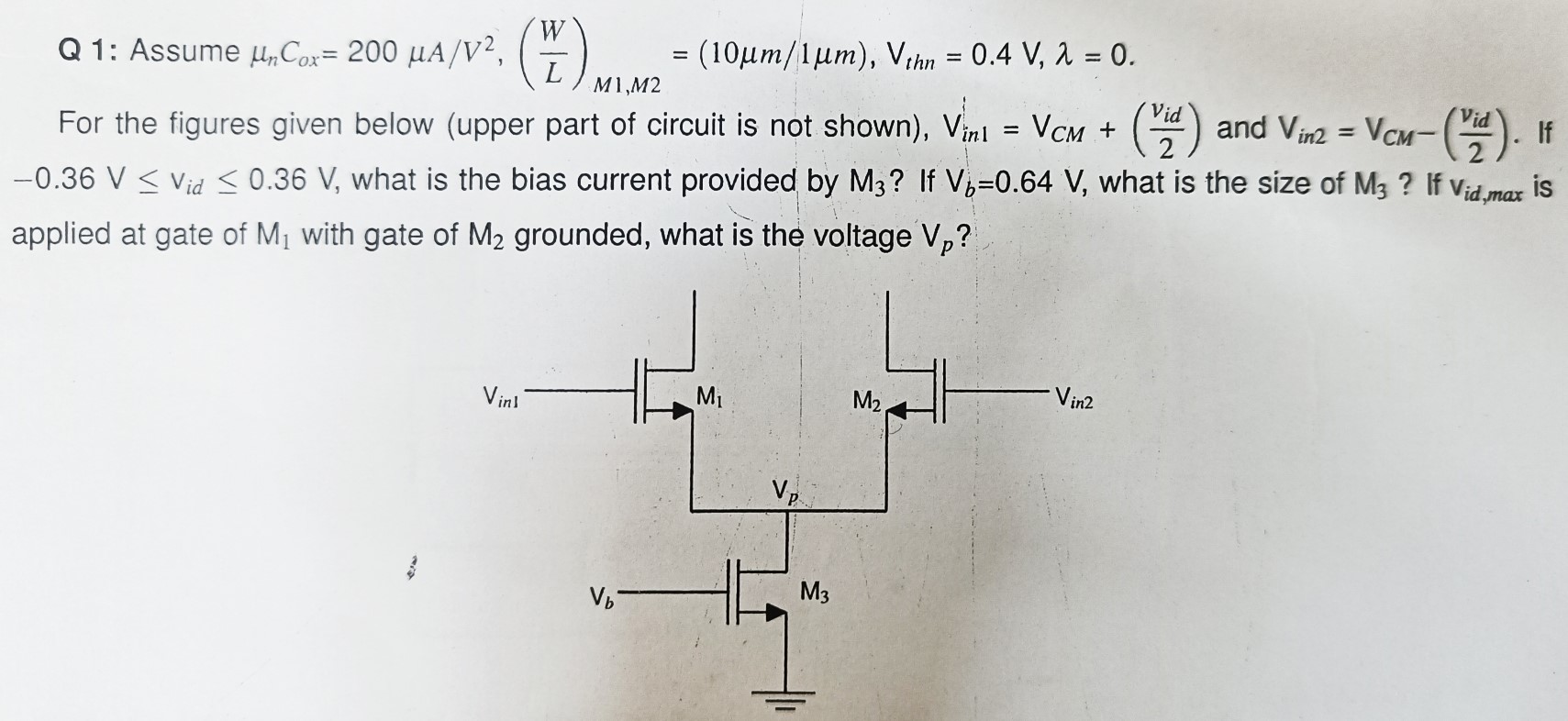Q 1: Assume μnCox = 200 μA/V2, (WL)M1, M2 = (10 μm/1 μm), Vthn = 0.4 V, λ = 0 For the figures given below (upper part of circuit is not shown), Vin1 = VCM + (vid/2) and Vin2 = VCM − (vid/2). If −0.36 V ≤ vid ≤ 0.36 V, what is the bias current provided by M3 ? If Vb = 0.64 V, what is the size of M3 ? If vid, max is applied at gate of M1 with gate of M2 grounded, what is the voltage Vp ?
